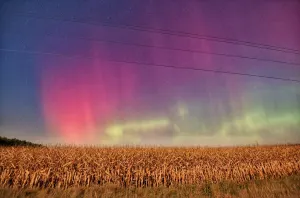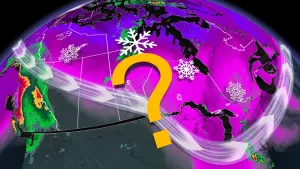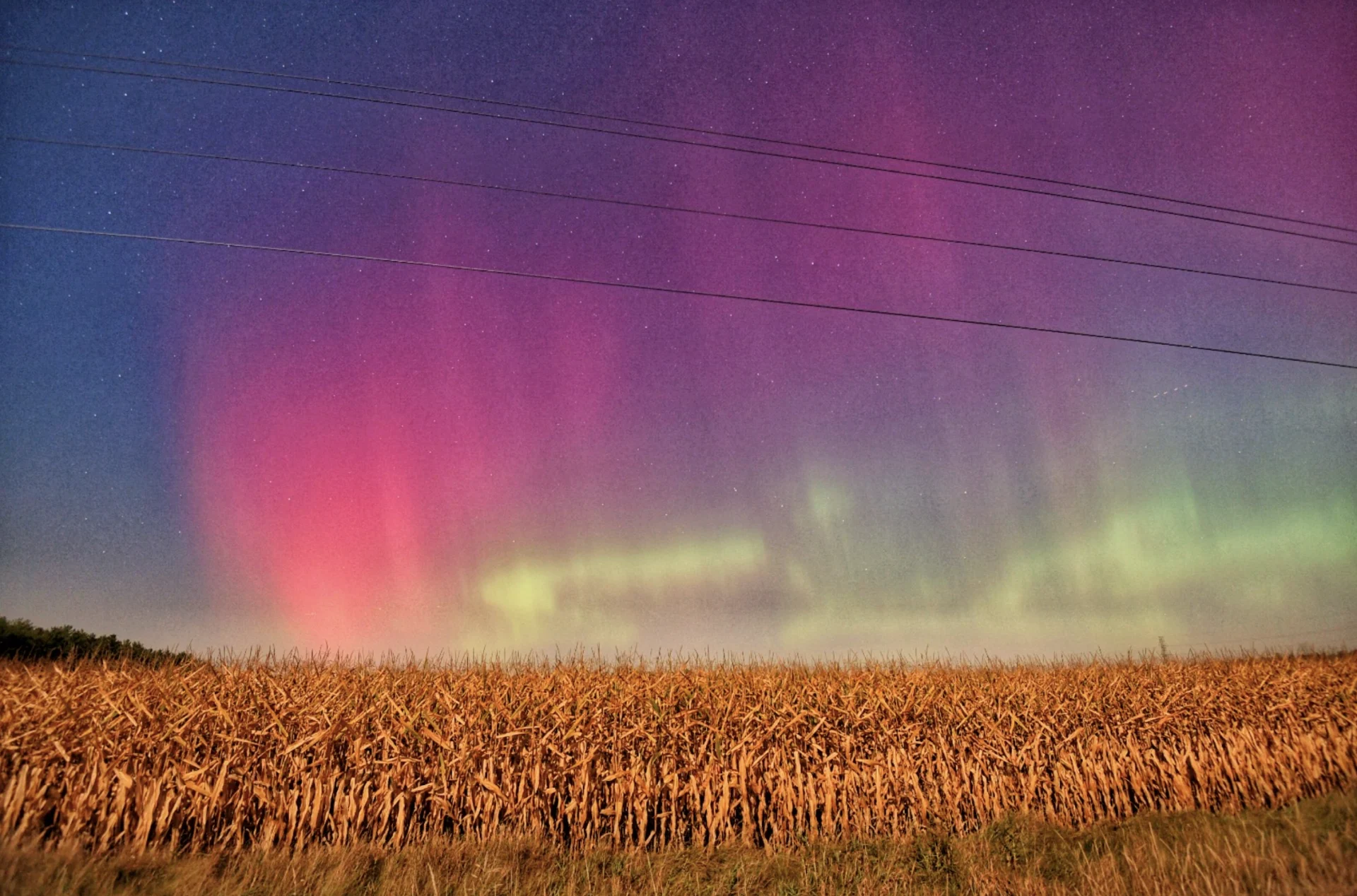
Look up! Auroras may shine across Canada tonight and Friday night
After a major x-class solar flare caused an eruption from the Sun late on Tuesday, we may be in for another spectacular display of the Northern Lights in the nights ahead.
Eyes to the sky tonight and Friday night! Bright displays of the Aurora Borealis may be visible across Canada in the aftermath of a powerful solar flare.
Late in the afternoon on Tuesday, October 1, one of the strongest solar flares of the current cycle blasted out from the Sun. This flare, ranked as X7.1-class, originated from a fast-growing sunspot named AR3842.
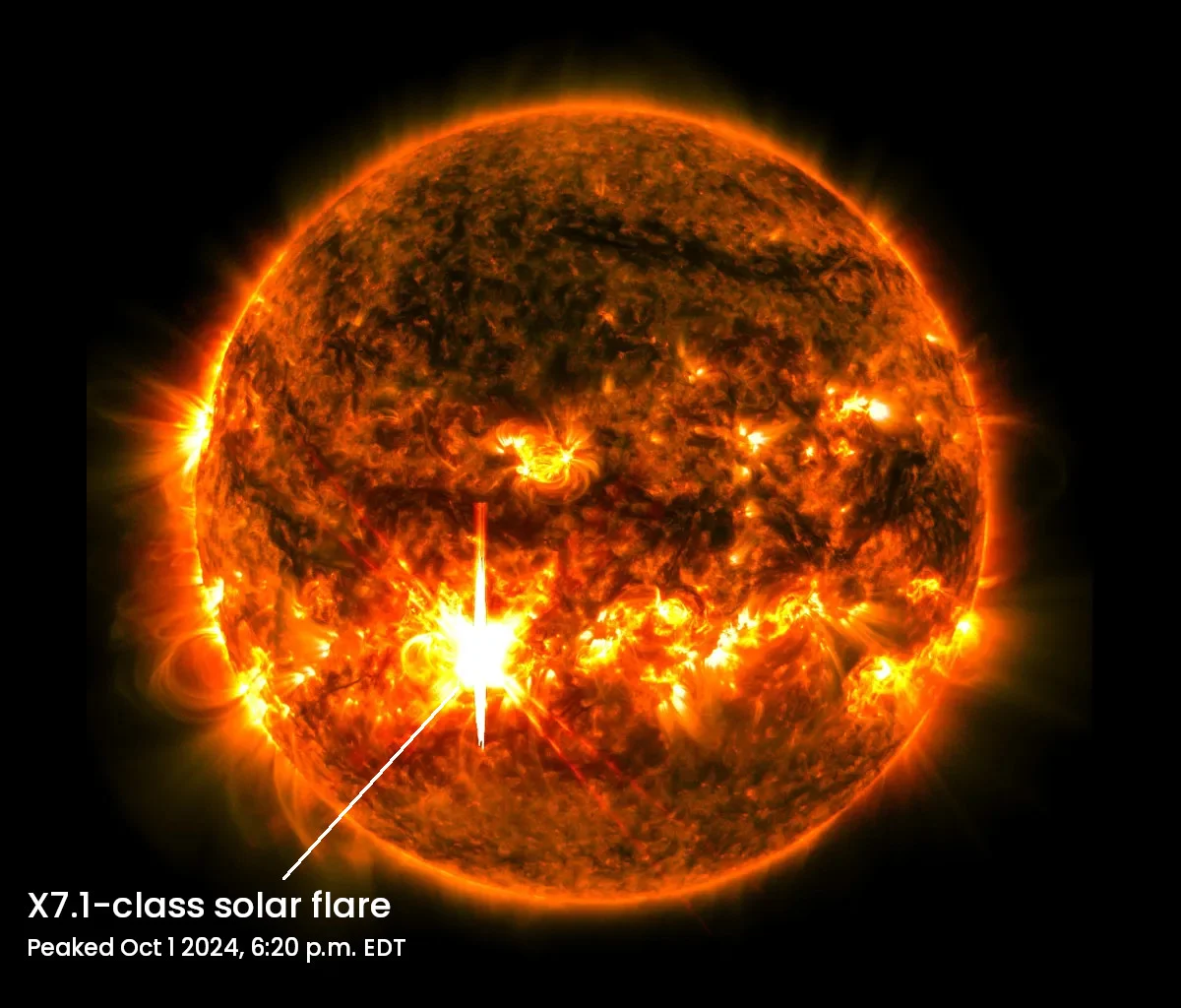
The X7.1-class solar flare from October 1, 2024, captured by NASA's Solar Dynamics Observatory (SDO). This flare is now the second most powerful of Solar Cycle 25, second only to the May 14 X8.7 flare. (NASA)
Following this powerful explosion, an instrument on the NASA/ESA Solar and Heliospheric Observatory (SOHO) spotted a coronal mass ejection, or CME, expanding away from the Sun. 'Solar storms' such as these are basically immense clouds of ionized plasma from the Sun, containing billions of tons of charged particles.
As they travel through space, CMEs expand out into a wide arc, stretching across the inner solar system and sweeping up the solar wind in their path.

Two frames of NOAA's solar wind model are combined here to show the movement of the October 1-2 CME between the Sun and Earth. At the top of each frame is a plot of the density of particles, with the widening arc between the Sun and Earth representing the expanding CME. At the bottom of each frame is a plot of the speed of the particles. The 'pinwheel' pattern around the Sun is the flow of the solar wind, and the dark region just behind the CME is the solar wind being swept up by the cloud. (NOAA/Scott Sutherland)
Should one of these solar storms pass by Earth, it can spark a disturbance in Earth's magnetic field, known as a geomagnetic storm. This typically results in bright displays of the Northern Lights across Canada and the northern United States.
As revealed in the image below, this CME only shows up faintly in imagery from SOHO. Since brighter equals denser in these coronagraph views, this solar storm will likely be fairly diffuse when it arrives here. Even so, with it following such a powerful solar flare, the particles in the cloud may have absorbed a significant amount of energy.
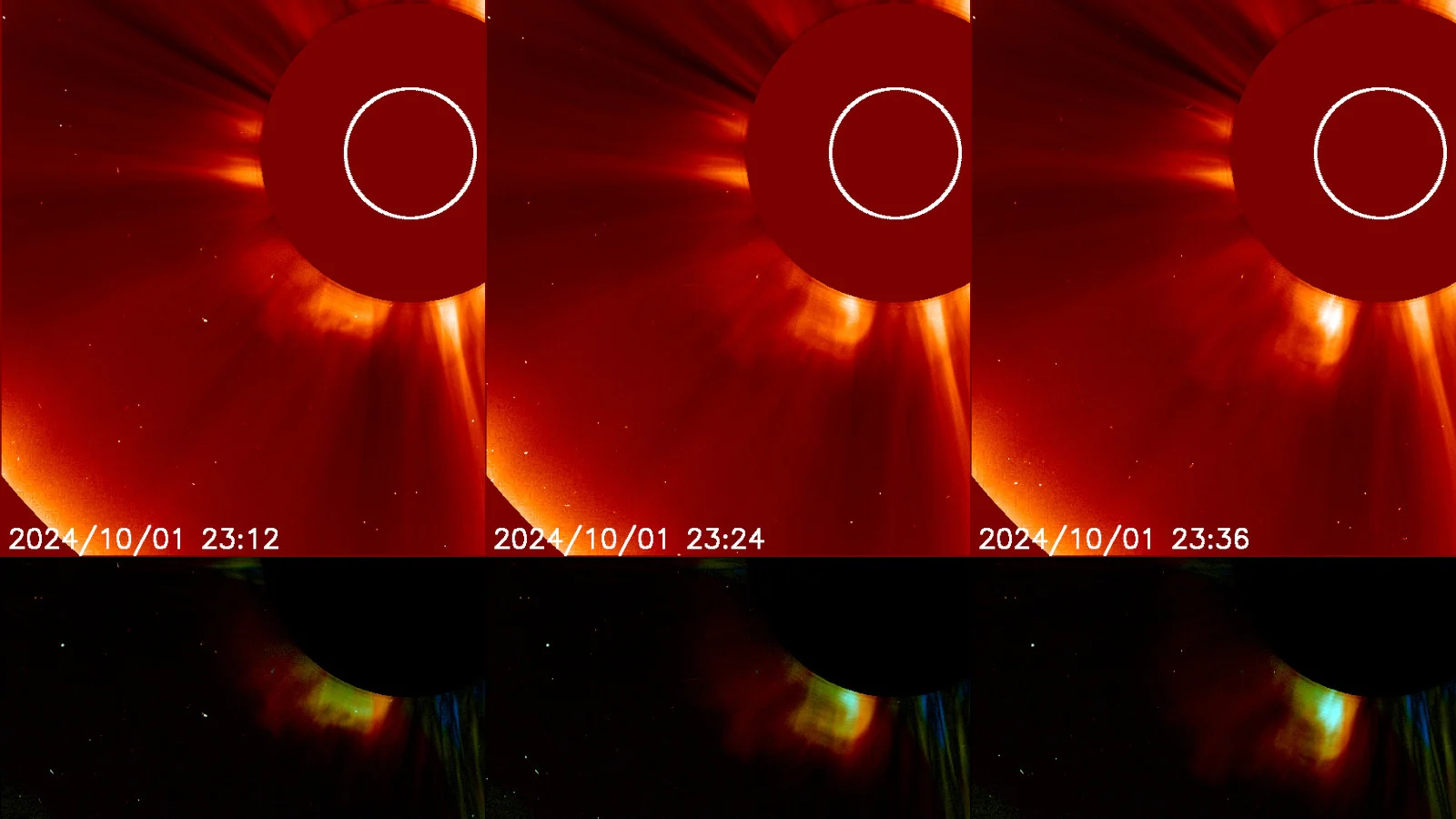
The Oct 1 CME is shown here in coronagraph images captured by the Solar and Heliospheric Observatory. The Sun is located inside the white circle, but is blocked by the coronagraph shield (the blank area around the white circle). The bright region to the lower left of the coronagraph shield is the expanding CME. Along the bottom of the image, the 'normal' solar activity from just before the eruption has been subtracted away to highlight only the expanding CME. (NASA/ESA SOHO/Scott Sutherland)
Space weather scientists have found that the density, speed, and energy of a coronal mass ejection each factor into what kind of auroras it can spark as it sweeps past our planet. The density of this CME appears to be relatively low, meaning there are fewer solar particles for Earth's magnetic field to capture and stream into the atmosphere (which is how auroras form). However, the extra energy those particles may contain could still result in a bright, colourful auroral display.
Aurora forecast
Based on the current forecast, the CME should arrive here around sometime on Friday, with some uncertainty as to whether it could get here a bit sooner (late on Thursday) or a bit later (early on Saturday). When it does arrive, it is expected to score a glancing blow on Earth's magnetic field, sparking a geomagnetic storm.
Given the density and speed of the solar storm when it arrives, and the energy the particles it the cloud may be carrying with them at that time, forecasters with NOAA's Space Weather Prediction Center have issued a Geomagnetic Storm Watch.
Geomagnetic storm levels could rise as high as G3 (strong) in the wake of this CME's arrival.
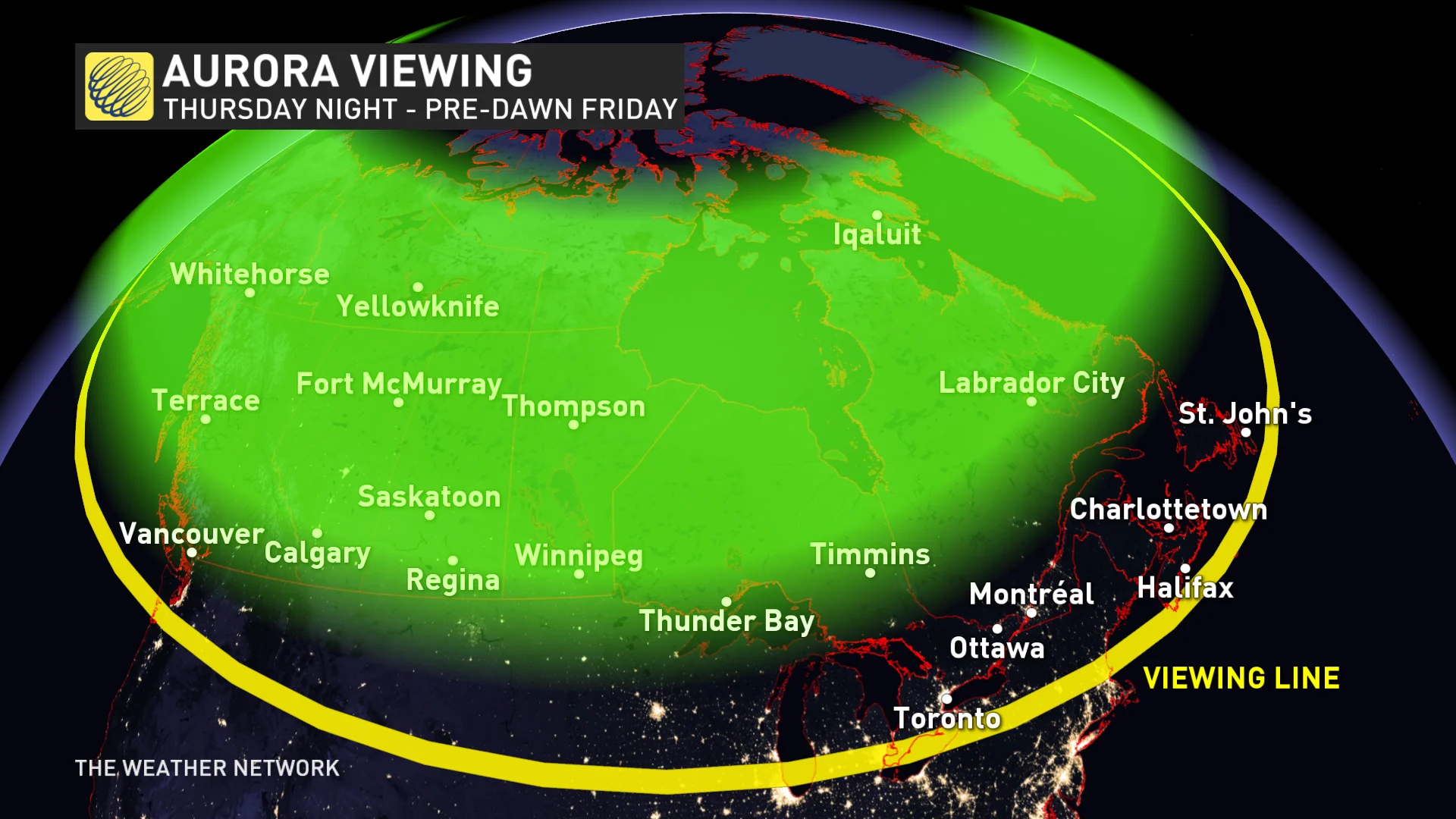
According to NOAA SWPC, we may see G1 (minor) geomagnetic storm conditions starting early Thursday evening (EDT), rising to G2 (moderate) and G3 (strong) levels overnight (EDT). With the strongest aurora displays tending to show up around midnight, local time, this timing will favour central and western Canada for aurora viewing Thursday night into Friday morning.
The forecast is also predicting a resurgence of aurora activity on Friday. Geomagnetic storm levels are expected to rise again to G2 (moderate) to G3 (strong) starting in the evening (EDT) and continuing at G2 levels overnight into Saturday. This timing would favour the eastern half of Canada for the strongest auroras, with displays potentially reaching all the way down into southwestern Ontario and the northeastern United States after dark. With G2 levels forecast to persist, western Canada could be in for two great displays in a row!
Strongest solar flare of Cycle 25
At just after 8 a.m. EDT, on Thursday, October 3, sunspot AR3842 blasted out another intense solar flare. This one ranked as X9.0-class, making it the strongest flare of the current cycle and the most powerful seen since September 2017.
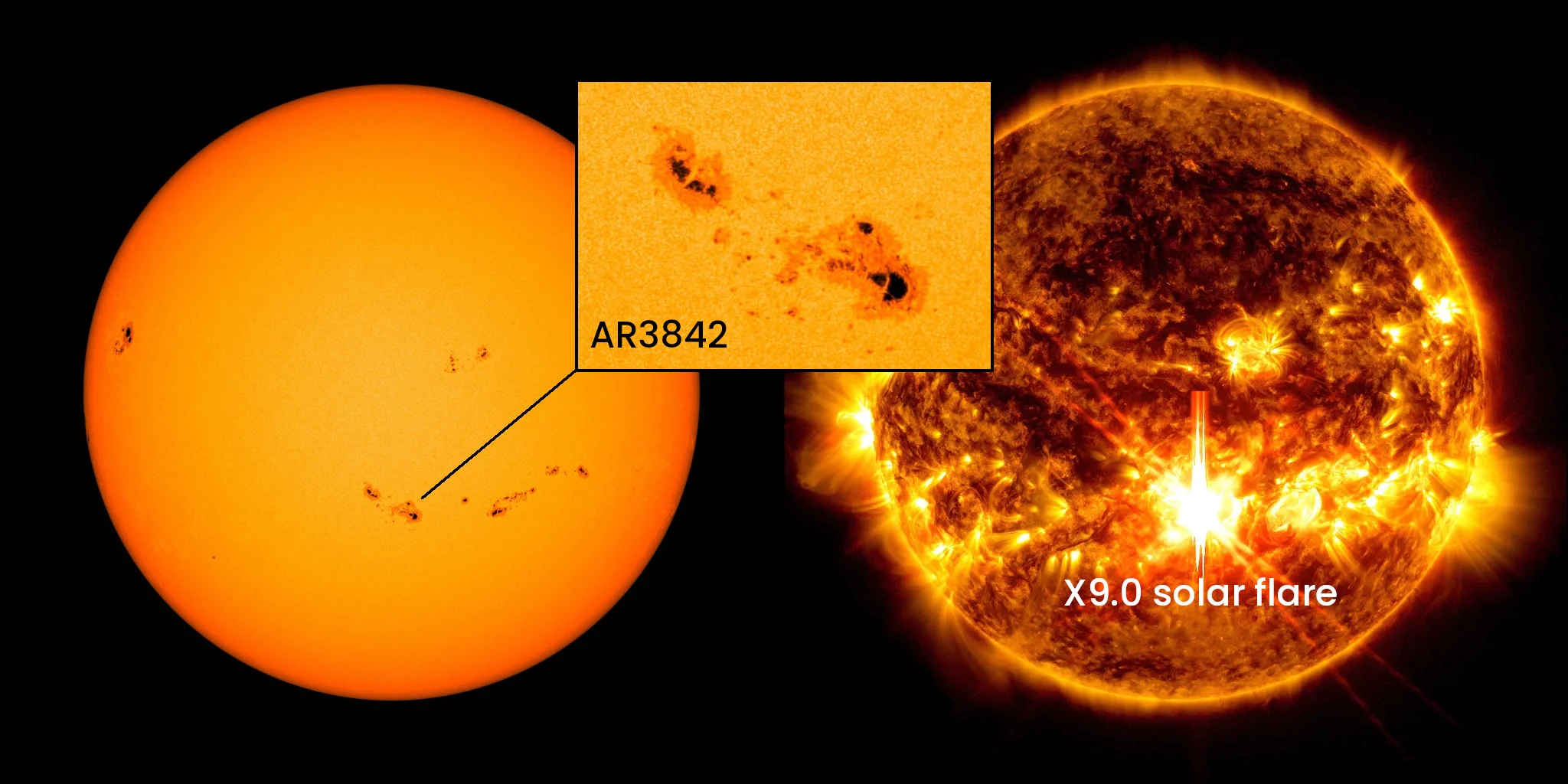
Two views of the Sun from NASA's Solar Dynamics Observatory are shown here, revealing the 'photosphere' (the apparent surface of the Sun) on the left, where over a half-dozen sunspots or sunspot groups are visible, and the Sun's corona, including the X9.0 solar flare that exploded on the morning of October 3, 2024. Top centre is a closeup of AR3842, the complex sunspot group that emitted this solar flare. (NASA/Scott Sutherland)
There's no telling yet if another coronal mass ejection resulted from this flare. New imagery from SOHO, and possibly the new GOES-19 weather satellite, will likely reveal more in the hours ahead.
Stay tuned for more updates!







